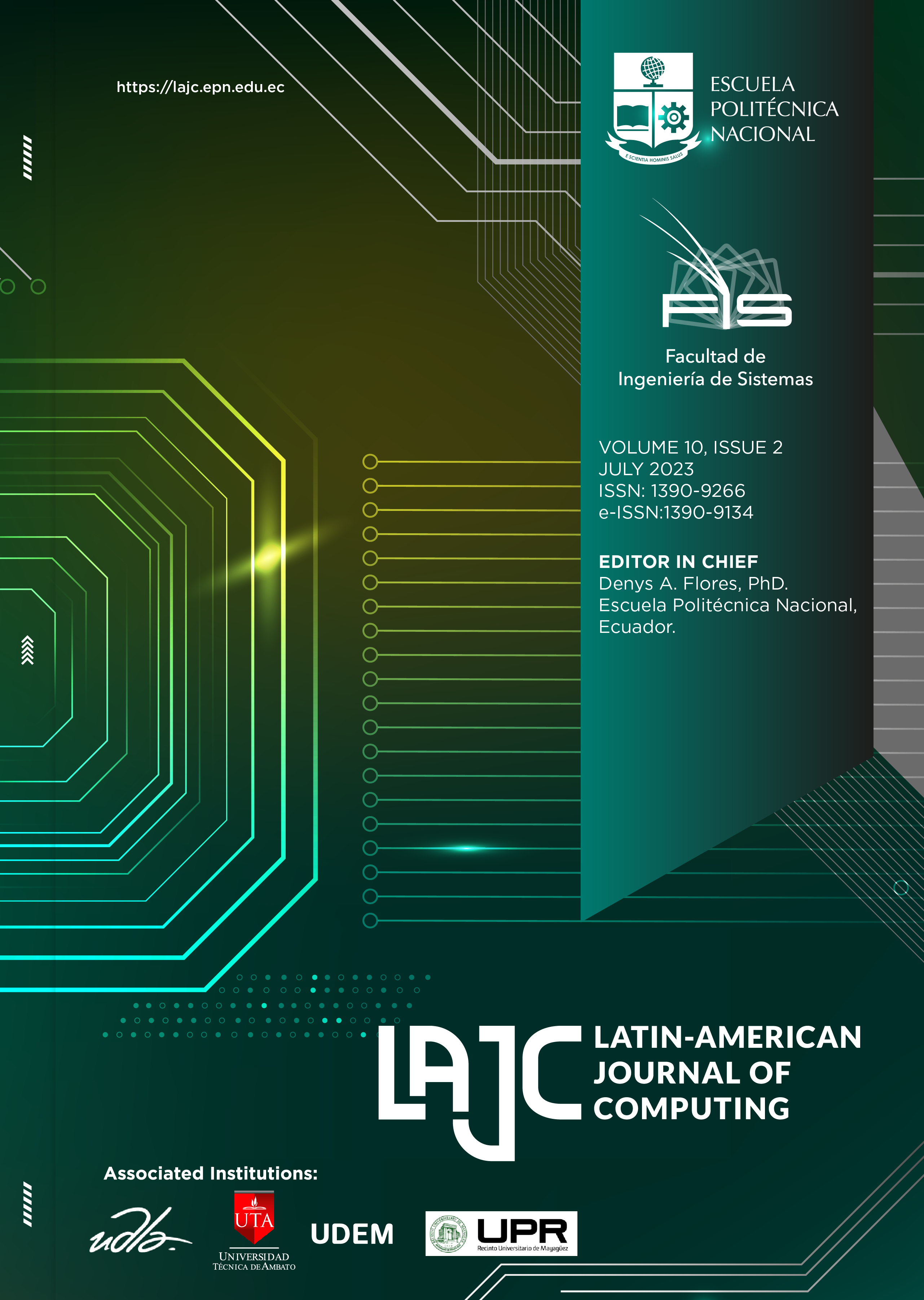Editorial
Keywords:
Editorial del Número 2 Volumen 10 de Latin-American Journal of ComputingAbstract
In the last years, the Latin-American Journal of Computing (LAJC) has served as a venue to showcase groundbreaking research in different areas of Informatics and Computer Science. In our current issue, we have witnessed the resurgence of computer modeling as a fascinating and powerful tool for shaping our future by tackling important day-to-day problems. We are thrilled to present to our readership, a collection of exceptional papers in this field, which emphasize the transformative power of computer modeling and mathematics to understand and solve problems in various domains.
Firstly, exploring the realm of early warning systems, Anika Manz et al. underscore the significance of accurate modeling techniques in detecting emergency situations and implementing necessary safety measures. Their work examines the performance of the SWASH model in the Ericeira prototype, comparing it with the HIDRALERTA early warning system. Their findings demonstrate the need to select the most suitable modeling approach for enhancing the accuracy and reliability of early warning systems.
In the domain of disease prediction, Ilha da Silva et al. analyze the widely used Susceptible-Infected-Recovered (SIR) model and its implications for understanding illness spreading in a population. By emphasizing the non-linear nature of the SIR model's dynamics, the authors highlight the necessity of employing numerical methods to obtain approximate solutions. Likewise, Carolina Maurmann et al. tackle the intriguing question of disease spreading between distinct populations, each possessing partial immunity to circulating strains. This study contributes to the understanding of the application of multi-fractional compartmental models in epidemiology.
In addition to these remarkable contributions, LAJC also presents some studies in other important applications of computer modeling. For instance, Rafael da Silva et al. discusses the dynamic behavior of large structures such as bridges and viaducts, the performance of which requires frequent monitoring. The authors discuss the importance of modeling the deflection of these structures; particularly, when the chances of having adverse maintenance conditions increase due to the vibrations produced by heavy vehicles. Similarly, Elisa Ferreira et al. explore the stiffness coefficient problem in micro and nano beams. By introducing Landweber's iterative regularization method, the authors propose a more stable solution for identifying stiffness in such structures, even in the presence of noise in strain measurements.
In short, the latest issue of LAJC highlights the critical evaluation of computer modeling approaches, the selection of appropriate numerical methods, and the consideration of dynamic complexities across various domains. The works submitted to this issue demonstrate an increasing research interest in this area to solve complex problems, calling out to constant collaboration, knowledge exchange, and innovation within the community of computer scientists.
We invite our readership to explore this new issue, which showcase interesting studies that invite us to embrace problem solving techniques leveraged by the transformative power of computer modeling and its profound impact on our society.
Downloads
Downloads
Published
Issue
Section
License
Copyright Notice
Authors who publish this journal agree to the following terms:
- Authors retain copyright and grant the journal right of first publication with the work simultaneously licensed under a Creative Commons Attribution-Non-Commercial-Share-Alike 4.0 International 4.0 that allows others to share the work with an acknowledgement of the work's authorship and initial publication in this journal.
- Authors are able to enter into separate, additional contractual arrangements for the non-exclusive distribution of the journal's published version of the work (e.g., post it to an institutional repository or publish it in a book), with an acknowledgement of its initial publication in this journal.
- Authors are permitted and encouraged to post their work online (e.g., in institutional repositories or on their website) prior to and during the submission process, as it can lead to productive exchanges, as well as earlier and greater citation of published work.
Disclaimer
LAJC in no event shall be liable for any direct, indirect, incidental, punitive, or consequential copyright infringement claims related to articles that have been submitted for evaluation, or published in any issue of this journal. Find out more in our Disclaimer Notice.










